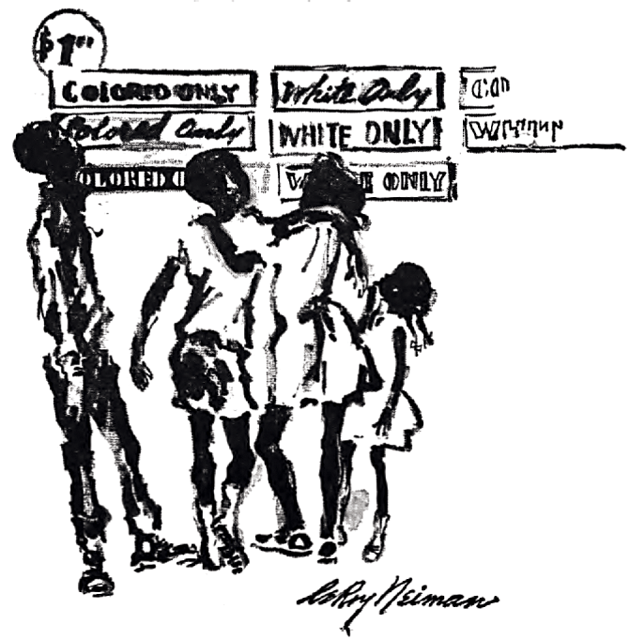Mrs. Goode was a little toad of a woman, dark and fleshy-featured. If my mother had seen her, she would have said she looked like she had a “touch of the tar” in her. But not Mr. Goode. He was all pink and white like strawberry and vanilla ice cream, and when you saw him, you wanted to take a spoon and start eating. He was also a real Johnny Reb, which was the name of his business, an office supply company in Montgomery, and he let you know it right away.
When I went to their store to buy my mimeograph machine, Mrs. Goode practically let me have the run of the place. I didn’t have but $60 to pay down on an $800 machine, but I have “more nerve than Dick Tracy,” my mother always said, and I had to have that machine to get out a newspaper I was running over in Tuskegee. I gave her the full treatment, the “whole bit,” of jive and salesmanship that I had learned from running a newspaper on a shoestring back in Los Angeles.
We hit it off immediately. She kept looking at me admiringly while I filled out the credit application. “Where’d yo’ mamma git all that enuhgy?” she’d ask the girls. The girls, who were holding their breath for fear I wasn’t going to pull it off with $60, just looked back at her wide-eyed and shook their heads.
But I wasn’t the least bit afraid. It wasn’t just the treatment I was giving her. You know, determined, dynamic, earnest woman trying to do something. In my brief time in the South, I had learned how anxious Southerners were to trade. They had seen on television how the other half of the country lived and they were in a hurry to catch up. Credit is much easier to get down South than up North.
White folks don’t much fear Negroes running out on sales contracts down there. They’ve got ways of making them pay. Not that the Goodes would resort to those ways. They were very genteel people, even if Mr. Goode was a real Reb and went to some pains to let me know that I was black and he was white and unreconstructed.

An untitled illustration c. 1968 by LeRoy Neiman. © LeRoy Neiman Foundation/Licensed by VAGA, New York City
When I came in the day I met Mr. Goode, I went straight to the back. He was standing at the top of the steps. I had telephoned that I was having trouble with the machine and Mrs. Goode had told me to bring it over.
I was aware that we hadn’t been introduced and I knew we never would be. But when I got through writing the check for the monthly installment, we began to talk.
“You think you can make a go of that newspaper over there in Tuskegee?” Mr. Goode said, sitting down.
“Yes,” I said.
“Well, I don’t know,” he said slowly. “How’s it selling?”
“Oh, I’ve sold all I could print,” I said. Then I decided that the quickest way to get that white man off my back was to attack. “My biggest problem has been your machine,” I said. “That machine isn’t doing what the catalogue says it should do.”
I had touched the most sensitive chord in his makeup. He was sitting up straight behind his desk now and leaning forward, and his voice had the ring of steel endemic to men of commerce at the moment of truth.
“I tell you what I’m going to do,” he said. “I’m going to have Robinson take your machine and put one of our Model 290s in your car. That’s a bigger, more expensive model.”
“That’ll suit me fine if the machine performs,” I said, getting to my feet.
Throughout the rest of the transaction, Mr. Goode hung about like a floorwalker, his hands in his pockets, his vested belly stuck out, his bright blue eyes watchful and noncommittal. He studied me as if I were a different breed of animal from any he had ever seen before, but I also had the feeling that he protected us from the white Montgomerians whose craggy faces hardened when they walked in and saw me and my children walking and talking uninhibitedly around the store, standing under the hooks of metal plates which still in the year of Our Lord and the 1964 Civil Rights Act said white only, colored only, and sold for a dollar, and nudging one another and pointing at them and laughing.
And also protecting his craggy-faced Montgomerians from us, moving deftly with a greeting, a word, a handshake, a clasp on the arm to make them continue to feel at home, “somebody special,” and cock of the walk in spite of the undeferential Negroes littering the place.


























































































